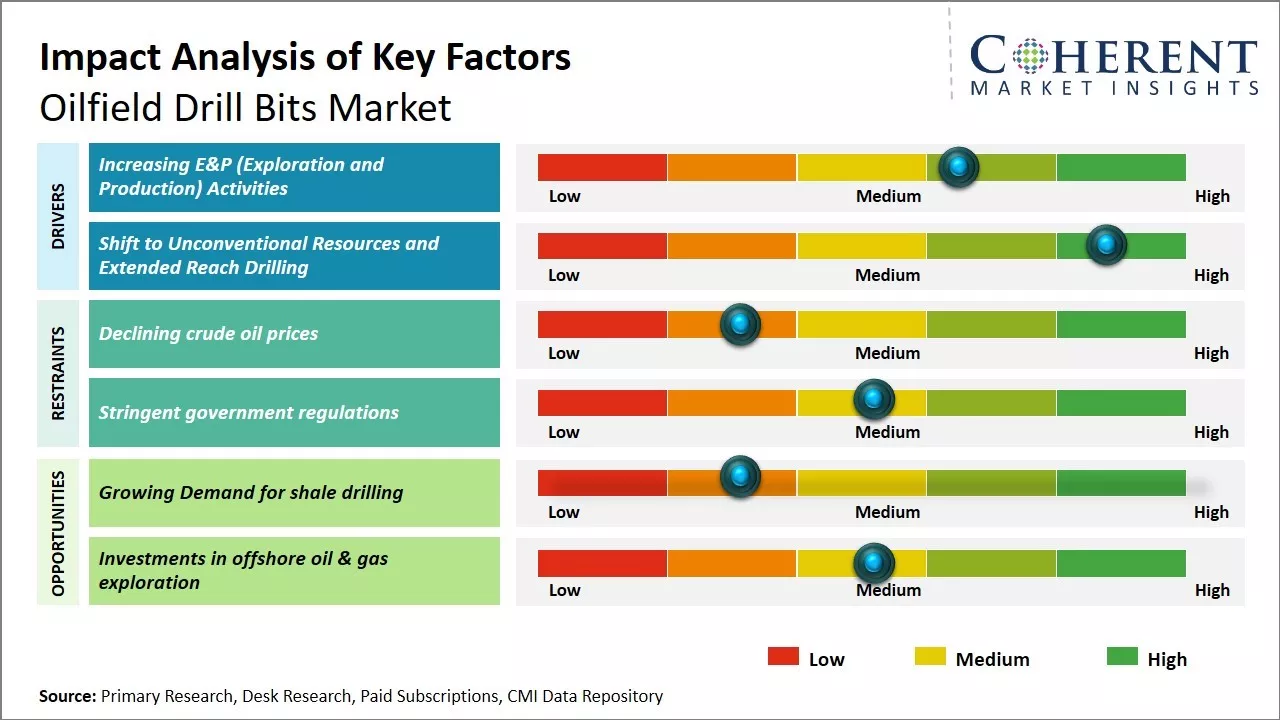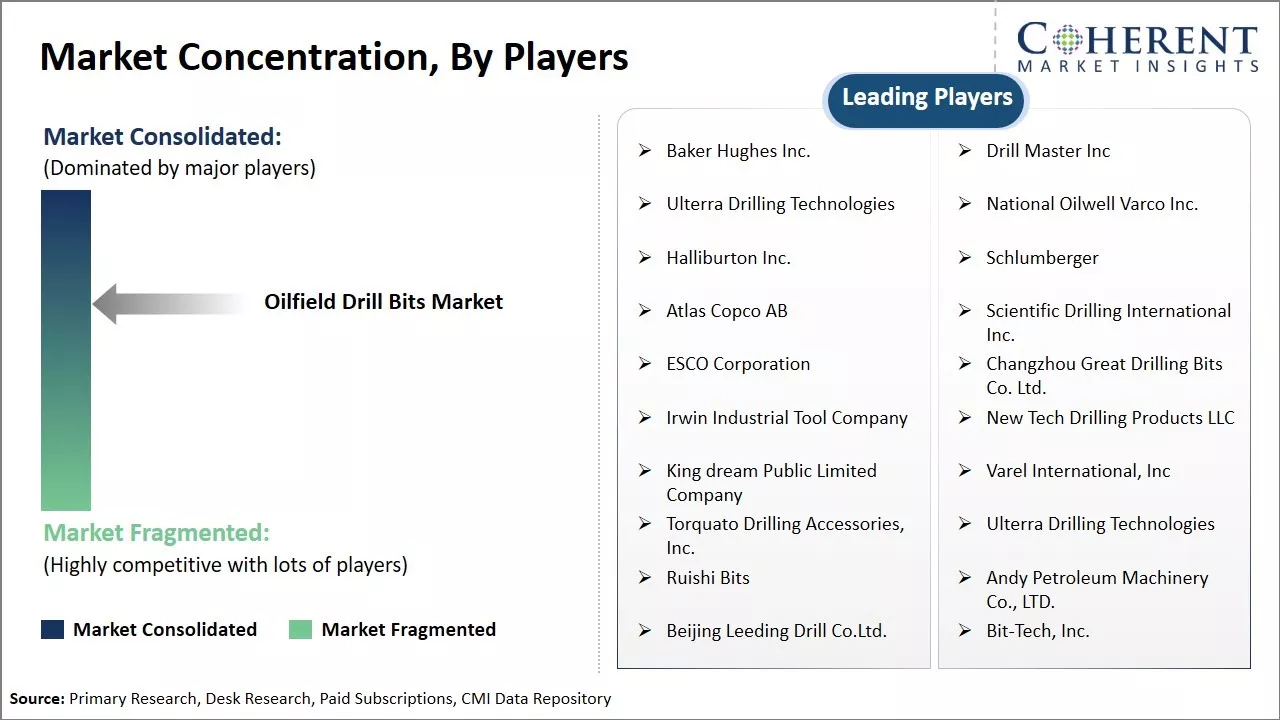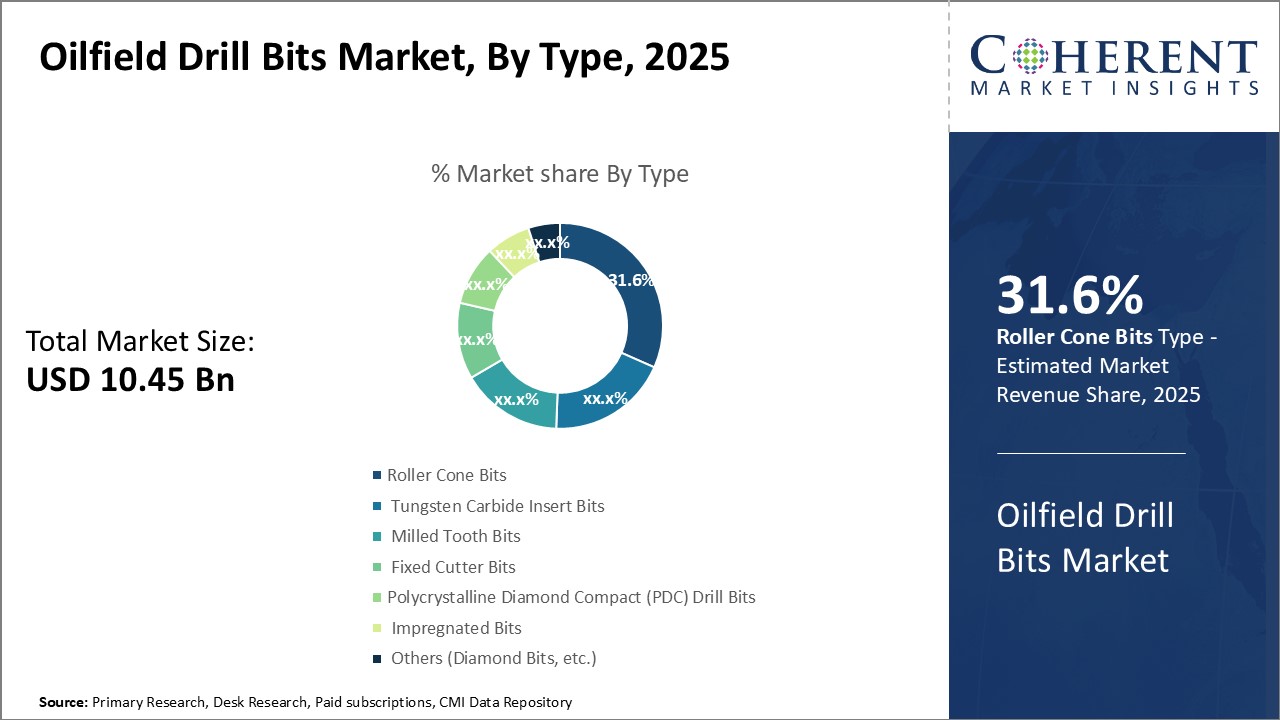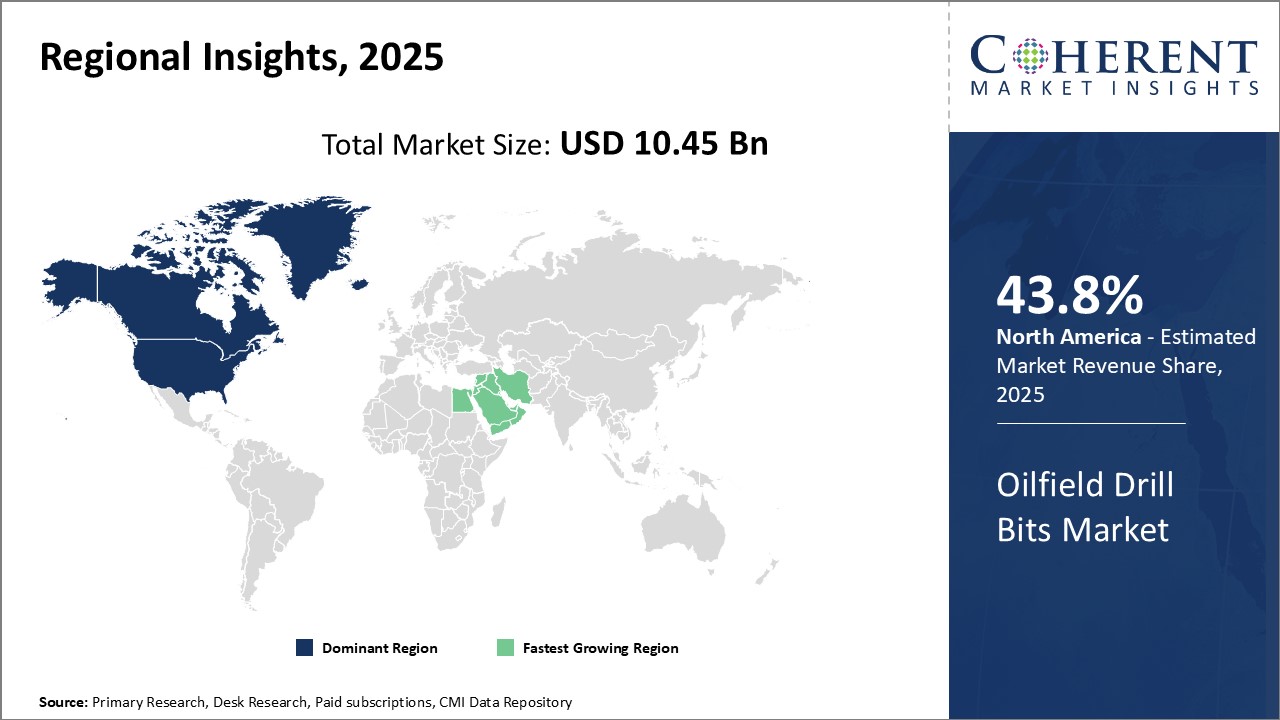The Oilfield Drill Bits Market is estimated to be valued at USD 10.45 Bn in 2025 and is expected to reach USD 16.04 Bn by 2032, exhibiting a compound annual growth rate (CAGR) of 6.3% from 2025 to 2032.

Discover market dynamics shaping the industry: Download Free Sample
An increase in offshore and onshore drilling operations along with growth in complex oil and gas drilling projects are driving the demand for better and advanced drill bits. The market is witnessing rising adoption of products like PDC bits, hybrid bits, and tricone bits which provide more efficiency and help in reducing drilling time. Additionally, focus on extracting oil and gas from unconventional reserves and increasing investments in complex wells are expected to propel the market growth during the forecast period. Key players are investing in the development of drill bits with properties like high strength, corrosion, and wear resistance to cater to evolving industry requirements.
Increasing E&P (Exploration and Production) Activities
With oil prices stabilizing over the past few years and demand continuing to rise globally, oil and gas companies have increased their exploration and production spending significantly. Major oil producers such as ExxonMobil, Shell, and Chevron have ramped up their capital expenditure budgets for offshore and onshore E&P projects around the world. National oil companies of countries like Saudi Arabia, Iran and Iraq have also expanded search for new oilfields. This has directly contributed to higher demand for drill bits as they are crucial equipment required for drilling oil and gas wells. More wells being drilled translates to requirement of new drill bits. Further, drill bits wear out with use and need periodic replacement, contributing to recurring market for drill bits industry. Experts predict that global upstream capital spending on oil and gas E&P is set to grow at a healthy pace over the medium term, assuming oil prices remain stable. This will ensure continuous demand flow for oilfield drill bits from drilling activities.

Get actionable strategies to beat competition: Download Free Sample
Shift to Unconventional Resources and Extended Reach DrillingWith many of the easily accessible conventional oil and gas reservoirs now largely depleted, industry players have been forced to exploit unconventional resources such as tight oil, shale gas, and deepwater reserves which are technically more challenging to drill. This has increased the complexity of drill bits design. Drill bits required for drilling horizontal and directional wells in tight formations need to be equipped with advanced cutting structures, bearings, and hydraulic features to withstand high drilling pressures, torques, and temperatures. Similarly, drill bits for offshore deepwater wells demand enhanced seal design and ability to drill longer vertical and horizontal sections with high build rates. Manufacturers have responded to this need by introducing new cutter materials, hydraulics, configurations, and designs in drill bits. For instance, the use of diamond cutters, steerable systems, roller cone bits for shales, and PDC (polycrystalline diamond compact) bits equipped with mud motors for managed pressure drilling has grown. The shift to resource bases which are harder to drill through will likely sustain demand for technologically sophisticated drill bits.

To learn more about this report, Download Free Sample
Market Challenges: Declining Crude Oil PricesThe oilfield drill bits market faces several challenges. Declining crude oil prices in recent years have led to reduced exploration and production budgets by oil companies. Additionally, stringent environmental regulations regarding offshore drilling and hydraulic fracturing have limited potential growth areas. Sustaining bit performance over long drilling durations remains an issue, as does improving efficiency to maximize oil recovery from mature fields.
Market Opportunities: Growing Demand for Shale Drilling
Demand for shale drilling is increasing production from unconventional reserves. Developing horizontal and directional drilling technologies further enhances shale extraction. Depleting conventional reserves are driving the exploration of untapped regions like the Arctic and ultra-deepwater fields. Novel materials and manufacturing techniques offer longer drill bit life and the ability to drill harder rock formations.

Discover high revenue pocket segments and roadmap to it: Download Free Sample
Insights, By Type: Roller Cone Bits Dominate Due to Proven Durability in Hard Rock FormationsThe roller cone bit segment contributes the 31.6% share of the oilfield drill bits market due to its proven effectiveness in drilling through hard rock formations. Roller cone bits feature rolling cones studded with teeth that crush and grind the rock as they rotate. This mechanical rock-breaking action makes roller cone bits highly durable for penetrating thick layers of igneous and metamorphic rocks commonly found in oil and gas reservoirs. The teeth on roller cone bits can be replaced in sections as they wear down from use. This replaceable cutting structure enables operators to restore bits to like-new condition and extend run times in the well. The modular tooth design also facilitates customized configurations of tooth types, sizes, and arrangements to optimize performance for varying lithologies. When conditions demand, operators simply index new cones with different cutting structures onto the bit body. This customizability and exceptional durability give roller cone bits an edge over more delicate fixed cutter designs in abrasive and impact-laden hard rock drilling.
Insights, By Application: Onshore Dominates Due to Vast Resources and Established Infrastructure
The onshore segment leads the oilfield drill bits market with 61.72% share owing to the abundance of petroleum resources located on dry land. Onshore oil and gas accounts for the bulk of global hydrocarbon production due to prolific shale basins, conventional oil and gas reservoirs, and heavy oil deposits situated near existing pipeline and refining infrastructure. Established onshore production hubs like the Permian Basin, Bakken Formation, and Eagle Ford Shale sustain intense drilling activity that consumes millions of drill bits annually. Onshore areas also benefit from lower operating costs relative to offshore environments. Drilling on land eliminates expensive offshore rig mobilization and support services. Tight formation operators particularly favor horizontal onshore wells for maximizing drainage per wellbore. As hydraulic fracturing technologies mature, onshore tight oil and shale gas resources continue unlocking, buoying demand for drill bits optimized for long lateral sections. Additionally, governments favor onshore development for energy security and economic development of domestic resources over politically sensitive offshore activities.

Need a Different Region or Segment? Download Free Sample
North America has established itself as the dominant regional market for oilfield drill bits globally with 43.8% market share. The region accounts for the largest share of the global oil & gas drilling activity due to its massive upstream industry and continued reliance on hydrocarbon resources for energy needs. The U.S., in particular, is the world's top oil and gas producer driven by its large shale reserves which are drilled extensively every year requiring a steady demand for drill bits. Established oilfield drill bits manufacturers have a strong presence in the U.S. catering to domestic requirements as well as exports. North American manufacturers offer a wide variety of polycrystalline diamond compact (PDC) and roller cone bits designs matched to different lithology and well profiles found abundantly across productive basins in the region.
The Middle East & Africa region has been witnessing high growth in the oilfield drill bits market over the past decade, primarily led by the African nations. Countries like Angola, Nigeria, and others have ramped up exploration and production activities involving complex wells to extract oil and gas from mature and offshore fields. Given the region's hydrocarbon reserves that still remain largely untapped, oilfield drilling activities are expected to rise steadily in the future as well. The rising complexity of wells has also increased adoption of imported premium drill bits from North America and Europe suited for drilling through tough formations. However, local drill bit manufactures are striving to enhance capabilities to make the most of local opportunities and reduce dependency on imports for commodity drill bits.
Oilfield Drill Bits Market Report Coverage
| Report Coverage | Details | ||
|---|---|---|---|
| Base Year: | 2024 | Market Size in 2025: | USD 10.45 Bn |
| Historical Data for: | 2020 To 2024 | Forecast Period: | 2025 To 2032 |
| Forecast Period 2025 to 2032 CAGR: | 6.3% | 2032 Value Projection: | USD 16.04 Bn |
| Geographies covered: |
|
||
| Segments covered: |
|
||
| Companies covered: |
Baker Hughes Inc., Drill Master Inc, Ulterra Drilling Technologies, National Oilwell Varco Inc., Halliburton Inc., Schlumberger, Atlas Copco AB, Scientific Drilling International Inc., ESCO Corporation, Changzhou Great Drilling Bits Co. Ltd., Irwin Industrial Tool Company, New Tech Drilling Products LLC, King dream Public Limited Company, Varel International, Inc, Torquato Drilling Accessories, Inc., Ulterra Drilling Technologies, Ruishi Bits, Andy Petroleum Machinery Co., LTD., Beijing Leeding Drill Co.Ltd., and Bit-Tech, Inc. |
||
| Growth Drivers: |
|
||
| Restraints & Challenges: |
|
||
Uncover macros and micros vetted on 75+ parameters: Get instant access to report
*Definition: The oilfield drill bits market involves the manufacturing and sales of drill bits and related tools used specifically in oil and gas drilling operations. Drill bits are heavy-duty cutting tools designed to drill through various subsurface rock formations to reach hydrocarbon reserves such as oil and natural gas trapped underground. The performance of drill bits is crucial in maximizing drilling efficiency and minimizing drilling time and costs for oil and gas exploration and production companies operating oil and gas wells globally.
Share
Share
About Author
Yash Doshi is a Senior Management Consultant. He has 12+ years of experience in conducting research and handling consulting projects across verticals in APAC, EMEA, and the Americas.
He brings strong acumen in helping chemical companies navigate complex challenges and identify growth opportunities. He has deep expertise across the chemicals value chain, including commodity, specialty and fine chemicals, plastics and polymers, and petrochemicals. Yash is a sought-after speaker at industry conferences and contributes to various publications on topics related commodity, specialty and fine chemicals, plastics and polymers, and petrochemicals.
Missing comfort of reading report in your local language? Find your preferred language :
Transform your Strategy with Exclusive Trending Reports :
Frequently Asked Questions
Joining thousands of companies around the world committed to making the Excellent Business Solutions.
View All Our Clients